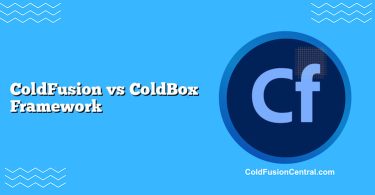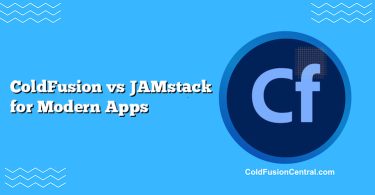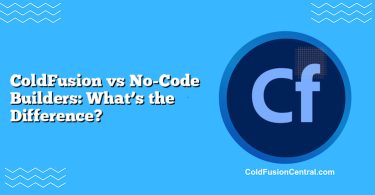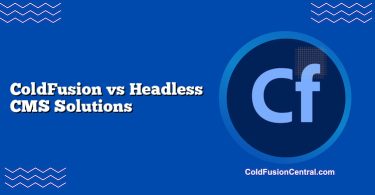Definitions
- ColdFusion: A JVM-based rapid application development platform and application server for building web applications using the CFML language. Offered as Adobe ColdFusion (commercial) and Lucee (open-source), it emphasizes fast server-side scripting, templating, and built-in services (mail, PDF, charts, scheduler).
- Kubernetes-Native Apps: Applications designed to run “cloud natively” on Kubernetes. They are packaged as containers, follow microservices and 12‑factor principles, and leverage Kubernetes primitives (Deployments, Services, Ingress, ConfigMaps, Secrets, Horizontal Pod Autoscaler) and often a service mesh for networking.
Overview
ColdFusion at a Glance
ColdFusion is a mature platform centered on CFML (ColdFusion Markup Language). It streamlines common web tasks—database queries, caching, PDF generation, image manipulation—through concise tags and functions. It’s well-suited to monolithic or modular monolithic architectures and can be integrated with Java libraries due to its JVM foundation. Two main distributions exist:
- Adobe ColdFusion (licensed, enterprise features, commercial support)
- Lucee (open-source, community-driven, high performance)
Kubernetes-Native Apps at a Glance
Kubernetes-native apps embrace containerization, microservices, and DevOps/GitOps. They typically use languages like Go, Java, Node.js, Python, or .NET. These apps are deployed as containers, managed by Kubernetes for scheduling, scaling, and resilience, and often use Helm, Operators, and CI/CD. They align with cloud-native standards (CNCF ecosystem) and integrate with observability stacks (Prometheus, Grafana, OpenTelemetry).
Key Features
ColdFusion Key Features
- Rapid CFML development with tags and script syntax
- Built-in services: mail, PDF, image, scheduler, password hashing
- ORM (Hibernate), caching (Ehcache), query of queries
- Integrated admin console for datasources, logging, security
- Easy integration with Java libraries and JVM tuning
- Available clustering, session replication, and REST endpoints
- Deployment: on-prem, VMs, Docker, or container orchestration
Kubernetes-Native Key Features
- Container orchestration: scheduling, health checks, restarts
- Declarative deployments and rollouts (blue/green, canary)
- Horizontal Pod Autoscaling and resource quotas
- Service discovery, Ingress, and service mesh (Istio/Linkerd)
- Secret management, RBAC, network policies
- Portable across clouds (GKE, EKS, AKS) and on-prem (OpenShift)
- Rich ecosystem: Helm charts, Operators, GitOps (Argo CD, Flux), observability
Architecture and Development Model
Language and Syntax
- ColdFusion:
- CFML supports tag-based syntax (
, ) and script-based syntax (component { function(){} }). - Easy server-side templating, form handling, and data access.
- CFML supports tag-based syntax (
- Kubernetes-Native:
- Polyglot: Go, Java/Spring Boot, Node.js/Express, Python/FastAPI, .NET.
- Application logic separated from platform concerns; configuration externalized via environment variables/ConfigMaps.
Supported Platforms
- ColdFusion:
- Runs on Windows/Linux/macOS (dev), on the JVM; deployable to app servers or Docker/Kubernetes.
- Adobe CF and Lucee images available for containers.
- Kubernetes-Native:
- Any platform that supports containers and Kubernetes. Managed services on AWS, Azure, GCP; on-prem via OpenShift, Rancher, or vanilla clusters.
Development Workflow
- ColdFusion:
- Quick iteration: edit CFML, refresh, use CF Admin for configuration.
- Traditional build/deploy or Docker-based pipelines.
- Kubernetes-Native:
- CI builds container images; CD deploys manifests/Helm; GitOps merges drive rollout.
- Emphasis on 12-factor practices, API contracts, and automated tests.
Performance
ColdFusion Performance Considerations
- Runs on the JVM with JIT compilation; performance is good for typical CRUD, reporting, and content management workloads.
- Bottlenecks often lie in database queries or file I/O rather than CFML execution.
- Optimizations:
- Connection pooling, object caching (Ehcache/Redis), query caching.
- JVM GC tuning, pooling of PDF/image operations.
- Reduce tag overhead using CFScript for hot paths.
- Vertical scaling (bigger VMs) works well; horizontal scaling via load balancers and session replication also available.
Kubernetes-Native Performance Considerations
- App performance depends on language/runtime (e.g., Go and Java are fast, Node/Python are versatile).
- Kubernetes adds minimal orchestration overhead; network hops may increase due to service mesh/sidecars.
- Optimizations:
- Use liveness/readiness probes wisely; avoid over-eager restarts.
- Right-size CPU/memory requests/limits to prevent throttling.
- Co-locate dependent services; cache aggressively; use async messaging (Kafka/NATS).
- Horizontal scaling is a first-class citizen with autoscaling driven by metrics.
Scalability and Availability
ColdFusion Scaling Patterns
- Scale up via JVM tuning and larger instances.
- Scale out using multiple CF instances, sticky sessions, or external session stores.
- Use web server connectors (IIS/Apache/Nginx) and CDN edge caching for static content.
Kubernetes-Native Scaling Patterns
- Declarative scaling with replicas and autoscalers.
- Rolling updates, canary releases, and self-healing via controllers.
- Global scalability with multi-cluster setups and service mesh traffic policies.
Security
ColdFusion Security
- Features like secure password hashing, session management, and OWASP-aligned best practices.
- ColdFusion Administrator supports lockdown guides, IP restrictions, and datasource permissions.
- Consider regular patching (Adobe CF security updates, Lucee patches) and WAFs.
- Secrets typically stored in CF Admin or environment variables; prefer Vault/KMS if containerized.
Kubernetes Security and Compliance
- RBAC, Namespace isolation, NetworkPolicies to restrict traffic.
- Built-in Secrets, admission controllers, Pod Security Standards.
- Image scanning, signed images (Sigstore/Cosign), and supply chain security (SLSA).
- Aligns with compliance frameworks via policy engines (OPA/Gatekeeper, Kyverno).
Cost and Licensing
ColdFusion TCO
- Adobe ColdFusion licenses (Standard/Enterprise) add predictable but non-trivial costs; support included.
- Lucee is free/open-source; you may pay for support from vendors.
- Operational costs lower for small teams; simpler stack reduces DevOps overhead.
Kubernetes TCO
- Kubernetes itself is free, but:
- Managed clusters (EKS/GKE/AKS) incur control-plane and resource costs.
- Engineering costs for DevOps, observability, and security can be significant.
- Excellent for large-scale or multi-team environments where efficiency at scale outweighs overhead.
Tooling, Ecosystem, and Community Support
- ColdFusion:
- Adobe support contracts, active Lucee community, plugins for VS Code, CF Builder, CommandBox/Ortus stack.
- Smaller ecosystem than mainstream stacks but very productive for specific domains.
- Kubernetes-Native:
- Massive CNCF ecosystem: Helm, Argo, Flux, Prometheus, Grafana, OpenTelemetry, Istio, Linkerd, Crossplane.
- Strong community, rapid innovation, abundant learning resources.
Real-World Use Cases
When ColdFusion Shines
- Rapid internal tools and line-of-business apps where time-to-value is critical.
- Reporting portals that generate PDFs, spreadsheets, and mail notifications.
- Legacy CFML apps with seasoned CF developers; minimal need for microservices.
Example: A regional bank’s operations team builds a case management portal. ColdFusion’s CFML and built-in PDF/email features let a two-person team deliver a production-ready tool in weeks, with simple HA via two CF nodes behind a load balancer.
When Kubernetes-Native Shines
- High-scale consumer apps, APIs, and event-driven systems with many independent services.
- Polyglot teams requiring language freedom, independent releases, and observability.
- SRE-driven environments that need autoscaling, self-healing, and compliance controls.
Example: A SaaS analytics provider runs dozens of microservices (ingestion, enrichment, ML inference). Kubernetes enables canary releases, per-service autoscaling, and cost-aware bin packing across regions for 99.9%+ uptime and efficient spend.
Hybrid Path: Containerized ColdFusion on Kubernetes
- Package Adobe CF or Lucee as OCI images and deploy on Kubernetes.
- Externalize config with ConfigMaps/Secrets; add Prometheus exporters and logging sidecars.
- Gradually carve off modules into microservices while the CF monolith remains the hub.
Side-by-Side Comparison Table
| Aspect | ColdFusion (Adobe/Lucee) | Kubernetes-Native Apps |
|---|---|---|
| Primary Model | App server + CFML | Containers + microservices on Kubernetes |
| Performance | Strong for CRUD/reporting; JVM-tunable | Varies by language; scales horizontally with HPA |
| Scalability | Vertical + limited horizontal via clustering | Native horizontal scaling, rolling/canary updates |
| Security | Built-in features; patch via vendor/community | RBAC, Secrets, NetworkPolicies, supply chain security |
| Cost | Adobe license or Lucee free; lower ops overhead | Kubernetes infra + DevOps costs; efficient at scale |
| Use Cases | Internal tools, portals, reporting, legacy apps | Large-scale APIs, event-driven systems, multi-team platforms |
| Pros | Rapid development, rich built-ins, simple ops | Portability, autoscaling, resilience, rich ecosystem |
| Cons | Smaller community, license (Adobe), less cloud-native | Operational complexity, learning curve, infra costs |
Pros and Cons
ColdFusion Pros
- Very fast time-to-market with CFML.
- Powerful built-in features (PDF, mail, image, scheduler).
- Mature JVM runtime, easy Java integration.
- Straightforward operations for small to mid-size teams.
ColdFusion Cons
- Smaller talent pool and ecosystem.
- Adobe licenses add cost (if not using Lucee).
- Less natural fit for microservices; scaling patterns are simpler.
Kubernetes-Native Pros
- Designed for scalability, resilience, and portability.
- Polyglot development; strong DevOps/GitOps workflows.
- Deep observability and security ecosystem.
- Fine-grained control over deployments, traffic, and policy.
Kubernetes-Native Cons
- Higher operational complexity and learning curve.
- Requires investment in CI/CD, observability, security posture.
- Overkill for small, stable applications with limited scale.
Decision Factors / Which One Should You Choose?
Consider the following:
- Team skills and hiring: If you have CFML expertise and a small operations footprint, ColdFusion may deliver the fastest ROI. If your team is DevOps/SRE-savvy or aims to grow across multiple services and languages, Kubernetes-native is a safer long-term bet.
- Scale and reliability needs: For modest traffic with predictable load, ColdFusion is adequate. For spiky demand or global traffic, Kubernetes-native autoscaling and multi-cluster options are compelling.
- Time-to-value vs. long-term flexibility: Need something working quickly with built-in features? ColdFusion. Need a platform for many services, independent release cycles, and strong observability? Kubernetes-native.
- Budget and TCO: ColdFusion (especially Lucee) may be cheaper for small teams; Kubernetes pays off when you operate at scale or require enterprise-grade guardrails.
- Modernization plans: If you run a legacy CF app, a hybrid approach—containerize ColdFusion on Kubernetes, then extract microservices—reduces risk while unlocking cloud-native benefits.
Rule of thumb:
- Choose ColdFusion if your scope is focused, timelines are tight, and your team wants simplicity.
- Choose Kubernetes-native if you anticipate rapid growth, multiple teams, and the need for standardized, automated operations.
Step-by-Step Modernization Paths
Path A: Keep ColdFusion, Containerize and Modernize
- Containerize Adobe CF or Lucee (use official or community images).
- Externalize configuration via environment variables, Secrets, ConfigMaps.
- Add health endpoints; configure readiness/liveness probes.
- Implement centralized logging and metrics (Fluent Bit, Prometheus).
- Use HPA for autoscaling if the app is stateless; externalize sessions (Redis).
- Gradually adopt GitOps for reliable, auditable rollouts.
Path B: Gradually Rewrite to Kubernetes-Native Microservices
- Identify bounded contexts; expose CFML modules behind REST/GraphQL.
- Create new services in suitable languages; containerize and deploy alongside CF.
- Introduce an API gateway/Ingress, then a service mesh for traffic control.
- Move shared concerns to platform layers (auth, metrics, tracing).
- Decompose the monolith incrementally, monitoring performance and cost.
Key Takeaways / Summary Points
- ColdFusion excels at rapid delivery with rich built-ins, ideal for internal tools, portals, and stable monoliths.
- Kubernetes-native apps thrive in large-scale, polyglot, and highly available environments with strong DevOps practices.
- Cost profiles differ: ColdFusion’s simplicity reduces ops overhead; Kubernetes introduces complexity but offers massive scalability and control.
- A hybrid approach—containerized ColdFusion on Kubernetes—balances immediate productivity with a pathway to cloud-native modernization.
- Decide based on team skills, growth trajectory, reliability requirements, and total cost of ownership.
FAQ
Can I run ColdFusion on Kubernetes?
Yes. You can containerize Adobe ColdFusion or Lucee and run them as Deployments on Kubernetes. Use Secrets for credentials, ConfigMaps for settings, readiness/liveness probes for health, and an Ingress for routing. This is a popular stepping stone toward cloud-native operations.
Is Lucee a drop-in replacement for Adobe ColdFusion?
Lucee implements most of CFML and is compatible with many Adobe ColdFusion apps. However, some enterprise features, admin settings, or specific tags may differ. Test thoroughly and consult migration guides to address gaps or use alternative libraries.
Do I need a service mesh for Kubernetes-native apps?
Not always. Start without one if your network requirements are simple. Add a mesh (Istio/Linkerd) when you need mutual TLS, fine-grained traffic policies, canary releases, or deep telemetry across many services.
What’s the best database approach for each option?
For ColdFusion monoliths, a single relational database with connection pooling often suffices. For Kubernetes-native microservices, use a database-per-service model where practical, and consider managed databases plus operators for lifecycle management.
How do costs compare between Adobe ColdFusion and Kubernetes?
Adobe ColdFusion introduces license costs but reduces operational overhead; Lucee is free but may require third-party support. Kubernetes is free but typically requires investment in managed clusters, platform engineering, and observability—costs that make sense when you operate at larger scale.




